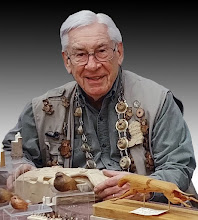This BLOG is sponsored
by “Misty Hollow
Carving”.
You are welcome to visit Misty Hollow and see all of my carvings.
My Web Site is a like a
Gallery – please drop in for a stroll through.
To help me promote my
Web Site please copy this URL address and email to someone today http://www.murraylincoln.com/
* * * * * * * *
Today’s Blog Post
In the past weeks I have had the wonderful opportunity to do more
art projects that are connected to my wood carving. I have been requested to carve certain
objects that need to fit into its surroundings appropriately. There has to be some coordination between
what the customer wants and what I produce.
Now trying to remember what is there and what I saw is difficult
at times. I have to keep looking over and over again to get the accurate
picture. And I need to look closely as well – very closely.
What I see together with my imagination is super important when
creating something like I am asked to create.
Now if I am asked to produce an exact likeness or to carve
something identical to what is already there… how is that going to happen… especially
when what I need to carve is hanging high above the floor in a very old
building???
In 2012 there is no problem at all. I simply take my digital
camera with me… point and shoot. I need not get the film developed like the old
days. I need only to push a few buttons and bingo there is the image on my camera
screen. A few more clicks and that same
image I am looking at can be sent through the air to arrive at my computer via
and email attachment. That can all be accomplished in a matter of seconds. And if I want to send that photo to millions
of people at a time I need only direct it to another site… and then the whole
world can see.
In split seconds I can get the job done… with little effort at
all.
Now it still takes me time to carve the new item. That cannot be
done by email or a click of a button.
This part of my project could take a few weeks or even a month or more
to get this part of the job done.
As I have been thinking of the ease of what I do can do things now
I was stopped in my tracks when reading the recent National Geographic Magazine
and the article about the Civil War in the USA.
The north and the south of the USA were fighting each other. They
were killing each other by the hundreds and thousands over the right to be the controlling
power in their country and have their own way.
From 1861 to 1865 it was a nightmare to live in that country and especially
live anywhere near the battle fields or battle areas.
Yet at the same time people back home in the north and the south wanted
to know what was happening. Messages and
stories had to be printed at home. And photos
of what was happening were needed.
But in the 1860s the cameras that were working at the time were
very slow. They required the people being photographed to sit very still in
order for the image to be made on the plate in the camera.
During war nothing sits still. In a battle everyone is anything
but still unless they are dead. Yet the newspapers
have printed and graphical images of the war that was going on… all without the
cameras that we have today. And it also happened without the use of their very
slow cameras of the day.
How could that happen?
Artists went out with the troops and simply drew the pictures on
sight!
When I read the story in the NGM I was clown away by what was
stated. The heroism of the artists was amazing to say the least.
They watched closely as the cannon balls were flying, horse were
being killed, corpses were walked over, and their friends were dropping like
flies. The images were burned into their
brains and trapped forever. Then they would pull out their sketch pads and utensils
to draw with… and put what they had seen on to the paper surface.
The result was to be accurate and show as close to what was taking
place as possible.
As the smoked cleared and the army recouped the drawing was
wrapped up and then transported by any means possible. They used horseback riders, trains, ships and
whatever method could be used to get it to the waiting newspaper.
After it arrived it was taken to a another group of artists that
produced an etching on the surface of a wood block. From that another electroplating
process made it possible for newspaper to print millions of copies.
From the battle scene to the newspaper could be two weeks or more.
The multiple steps along the way could possible embellish the facts that had
originally taken place.
The danger that these artists were placed in on the battle field
was extreme. A number of these men died. Some were captured as spies. And maybe
some were spies. Their minds and
imagination was the equivalent to my digital camera of today.
I have never thought much about how those old prints were made. I
had not considered the huge danger there was in getting the information for the
world to be able to see what took place.
NGM again has stirred my thoughts. Thanks NGM!
Today I am in awe for what took place way back then and for these
men that gave everything for the world to see.
My abilities and methods today is small potatoes besides what they
did. WOW!
~ Murray Lincoln ~
Resources:
http://ngm.nationalgeographic.com/2012/05/civil-war-sketches/katz-text




No comments:
Post a Comment